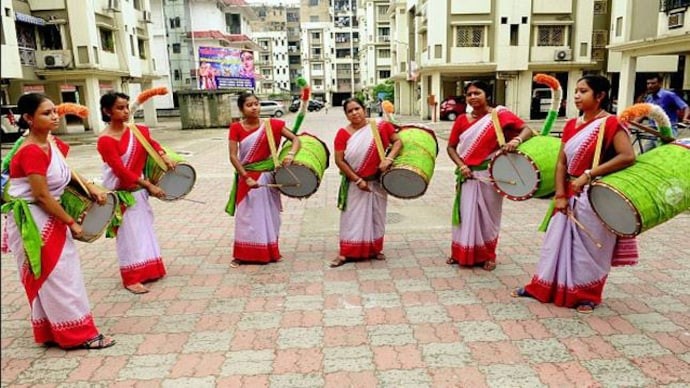Female Dhakis find their Own Rhythm at the Durga Puja Traditions Amidst Societal Barriers
Why in the News?
Women Dhakis at Durga Puja: Traditionally, playing the dhak (drums) at Durga Puja was a male-dominated art form, but women are now entering the profession.
- Mohila Dhaki Babadhamraj Sampradaya: A troupe of 10 female dhakis from Katwa, Purba Bardhaman district, North Bengal, challenging societal norms.
- Attire: White and blue saris paired with white sports shoes, carrying heavy dhaks on their shoulders.
- Despite the belief that dhaks are too heavy for women, they have embraced the art form, previously passed down through male heirs.
- Aparna Das: A 38-year-old dhaki in the troupe, learned the instrument 8 years ago.
- Faced criticism from neighbors for breaking gender norms, but her father, Dasan Das, a dhaki for over 55 years, supported her passion.
- Father’s Perspective: Passed on the skill to anyone interested, including his daughter, despite societal resistance.
Impact and Growth:
- The troupe now includes multiple women from the Das family: daughters, sisters-in-law, granddaughters, and mothers.
- Overcame societal rejection and now inspire many aspiring female dhakis in their village.
- Women and girls in the village are now encouraged to play the dhak, marking a significant shift in local attitudes.
- The group performs outside Kolkata, across districts of West Bengal, and in Tripura.
- Female Purohits: In 2021, four female priests (purohits) broke another barrier by officiating Durga Puja at 66 Pally in Kalighat, Kolkata.
- Historically, women performed rituals at home but were never formally recognized as priests in public ceremonies.
- Their involvement marks a significant departure from patriarchal traditions, similar to the rise of female dhakis.




